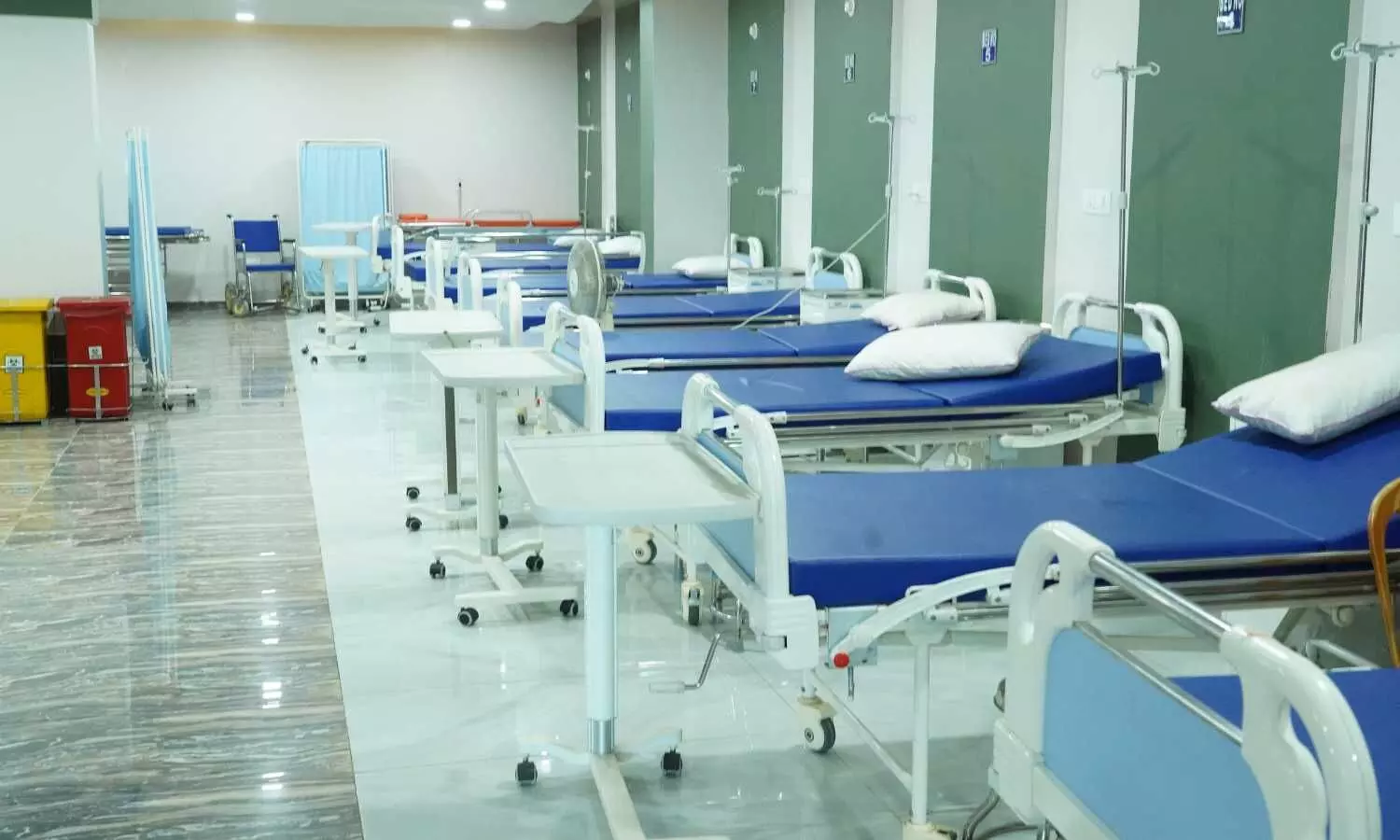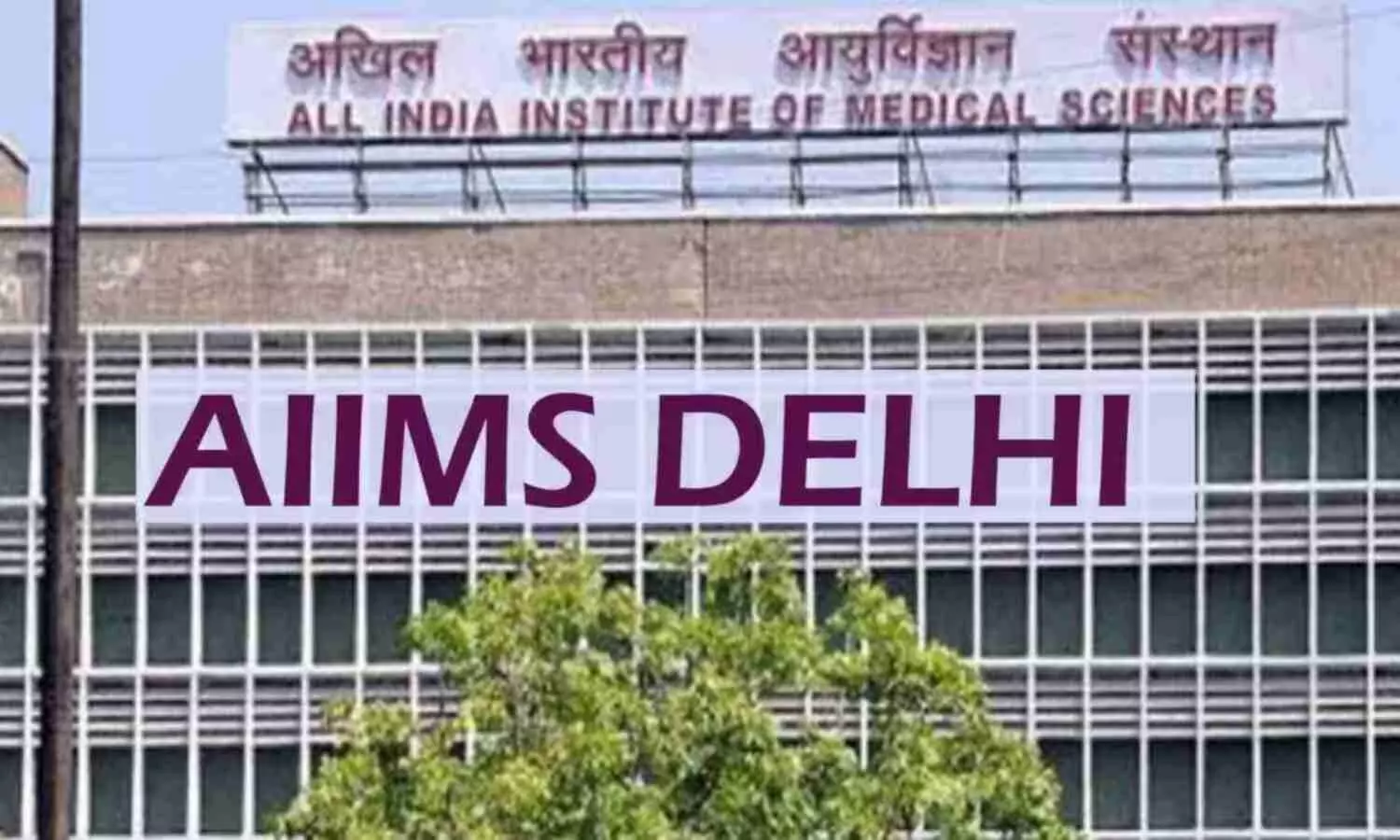High levels of ozone and grass pollen expected for Paris Olympics/Paralympics
Powered by WPeMatico
Powered by WPeMatico
Powered by WPeMatico

Mumbai: Sun Pharmaceutical Industries Limited has announced that the U.S. Food and Drug Administration (FDA) has approved LEQSELVI (deuruxolitinib) 8 mg tablets for the treatment of adults with severe alopecia
areata.
Alopecia areata affects around 700,000 people in the United States, and 300,000 have severe alopecia
areata. Alopecia often leads patients to self-treat before seeking professional help, driven by
dissatisfaction with the slow progress of existing treatments.
“LEQSELVI offers a new and effective solution that will significantly enhance options for long-suffering
patients battling severe alopecia areata and their physicians,” said Abhay Gandhi, CEO, North America
Business, Sun Pharma. “Our fast-growing dermatology business is excited to add this novel treatment to
its portfolio.”
Alopecia areata is a common autoimmune disease in which hair loss is thought to occur due to the
collapse of immune privilege, leading to the immune system targeting the hair follicles and causing
sudden hair loss on the scalp, face and sometimes other areas of the body.
LEQSELVI is a new, twice daily oral selective inhibitor of Janus Kinases (JAK) JAK1 and JAK2. As a JAK inhibitor, LEQSELVI interrupts
the pathways thought to contribute to hair loss in severe alopecia areata.
“We welcome the approval of LEQSELVI as a significant step for the alopecia areata community,” said
Nicole Friedland, President and CEO, National Alopecia Areata Foundation (NAAF). “Alopecia areata is an
autoimmune disease, with significant physical, emotional and financial impacts that go beyond hair loss.
The announcement empowers the alopecia community with even more choices, to which NAAF is
committed, and provides another important option for those living with severe alopecia areata.”
The approval is based on data from two multicenter, randomized, double-blind, placebo-controlled
Phase 3 clinical trials THRIVE-AA1 and THRIVE-AA2, which enrolled a total of 1,220 patients with alopecia
areata who had at least 50% scalp hair loss as measured by Severity of Alopecia Tool (SALT) for more than six months. Data were also collected from two open-label, long-term extension trials in which
patients were eligible to enroll upon completion of the 24-week trials.
At study baseline, the average patient had only 13% of their scalp hair coverage. In the trials, at 24
weeks, the primary endpoint was met, with more than 30% of patients taking LEQSELVI experiencing
80% or more scalp hair coverage (SALT ≤20).
The number of patients taking LEQSELVI and achieving a
SALT score of ≤20 showed a consistent upward trend with no plateau through 24 weeks. Additionally, up
to 25% of patients had almost all of their scalp hair back at 24 weeks (≥90% coverage).
“For many people with severe alopecia areata, early intervention with effective treatment is critical,” said
Natasha Mesinkovska, MD, PhD, Associate Professor and Vice Chair for Clinical Research of Dermatology,
University of California, Irvine, and investigator in the LEQSELVI clinical development program. “An oral
JAK that delivers proven results will be impactful for the alopecia areata community.”
Across the Phase 2 dose-ranging study and Phase 3 randomized, placebo-controlled trials, few patients
(3.1%) receiving LEQSELVI 8 mg twice daily were discontinued from the trials due to adverse reactions. In clinical trials, more than 100 people continued taking deuruxolitinib for more than three years. LEQSELVI may cause serious side effects including serious infections, malignancies, thrombosis,
gastrointestinal perforations, and certain laboratory abnormalities. There also may be an increased risk
of mortality and major cardiovascular events. LEQSELVI should not be used in patients who are CYP2CP
poor metabolizers or who are taking moderate or strong CYP2C9 inhibitors.
“We are pleased with the timely approval of LEQSELVI by the U.S. FDA,” said Marek Honczarenko, MD,
PhD, Senior Vice President, Head of Development, Sun Pharma. “This validates our team’s capability to
effectively bring treatments from research and development to approval in a way that is meaningful for
physicians and patients. I want to thank all the investigators and patients for their participation in the
clinical trials.”
Powered by WPeMatico

New Delhi: The central government-run hospitals in the national capital received a slight increase in budget allocation in the recent union budget presented by Finance Minister Nirmala Sitharaman, compared to the previous year.
On Tuesday, the minister announced the budget allocation of three central government hospitals including All India Institute of Medical Sciences (AIIMS) Delhi, Ram Manohar Lohia (RML), and Lady Hardinge Medical College (LHMC).
Among the three government hospitals, AIIMS Delhi secured a notable increase in its budget, marking a rise of approximately 8.7% from the previous year to Rs 4,523 crore. An increase of Rs 388.33 crore as compared to last year’s budget. The revised budget for the institute last year was Rs 4,278 crore.
RML Hospital emerged as a significant beneficiary with a budgetary hike of 23%, totalling Rs 1,610 crore for the fiscal year 2024-2025. The revised budget for the hospital in 2023-24 was Rs 1,304.10.
Also read- Health Ministry Allocated Rs 90,958.63 Crore: Here Are All The Union Budget 2024 Health Highlights
Lady Hardinge Medical College and its associated Sucheta Kriplani Hospital witnessed an increase in the budget allocation for this year which is Rs 750 crore compared to last year. For the fiscal year 2023-24, the revised budget was Rs 625 crore.
Meanwhile, the Safdarjung Hospital and its associated medical college, Vardhman Mahavir Medical College saw a reduction in the budget allocation after it received a total of Rs 1,874 crore this year which is a 3% decrease compared to last year. For the fiscal year 2023-2024, the hospital was allocated Rs 1933.07 crore.
Speaking to The Indian Express, AIIMS official spokesperson Dr Reema Dada said, “The institute has got what it had asked for. The increase in budget is meant for technology upgradation, increased footfall of patients… and mainly for the salary of doctors and staff where almost Rs 2,500 crore goes. These are our main expenditures.”
“The Budget is meant for salaries, and general expenses such as oil and transport expenditures, consumables, and office expenditures; machinery equipment like MRI and ultrasound machines, research PCR, real-time PCR, sonicators, and ultrasonicators; and major equipment for surgeries like surgery tables, high-end microscopes, SET facility, and various robotics. “For all the high-end equipment, the Budget we have got is good for meeting our demands,” said Dr Dada.
Medical Superintendent Dr Ajay Shukla of RML Hospital said, “The allocated budget will be spent on constructing a medical college building among other steps. Around 600 beds and 150 ICU beds will also be ensured for the same. We will also invest in strengthening the oncology department at RML and purchasing radiotherapy and Linac machines.”
In the 2024-2025 Union Budget, the Union Health Ministry has been allocated Rs 90,958.63 crore, an increase of 12.96 per cent over the Rs 80,517.62 crore 2023-24 revised estimates.
Powered by WPeMatico

Bhopal: Chief Minister Mohan
Yadav affirmed the state government’s dedication to improving healthcare
services in Madhya Pradesh stating that the government has submitted new proposals worth about Rs 199 crore to ensure proper facilities and patient care in Hamidia Hospital.
Yadav also emphasized the need for efficient utilization of
funds and proactive work from all officials. Yadav made these remarks following
an inspection of Hamidia Hospital on Monday evening.
During his visit, Yadav visited the infant ward and various other sections of the hospital, engaging with patients and their families to understand their needs and concerns. Senior doctors briefed him on the ongoing expansion efforts and proposed developments for the hospital. According to the Times of India, Yadav highlighted the
increased demand for medical services during the monsoon season and assured
that expansion projects are underway to accommodate the anticipated rise in
patient numbers. He stressed that these efforts aim to prevent any
inconvenience to patients.
Hamidia Hospital, the
largest medical facility in the state, currently operates with 1,850 of its
2,250-bed capacity. The Chief Minister announced new proposals worth
approximately Rs 199 crore to enhance patient care. These proposals include
purchasing advanced equipment for the Regional Institute for Respiratory
Diseases worth Rs 35 crore, establishing a Centre of Excellence for
Orthopaedics at Rs 42 crore, and allocating Rs 30 crore for cancer treatment
advancements, reports the Daily.
In addition, Yadav
revealed plans to launch a bone marrow centre at Hamidia Hospital soon. A new
hostel block for postgraduate students, costing Rs 20 crore, will also be
constructed, alongside the provision of a new MRI/CT machine worth Rs 20 crore.
Further developments
include the construction of a new integrated Outpatient Department (OPD) block
for Rs 35 crore and a new undergraduate hostel for Rs 17 crore. These
initiatives underscore the government’s commitment to providing
state-of-the-art healthcare facilities to the people of Madhya Pradesh. Chief Minister Yadav’s
inspection and subsequent announcements highlight a significant push towards
enhancing the healthcare infrastructure in the state, ensuring that residents
have access to better medical services and facilities.
Powered by WPeMatico

Sulfonylureas are a class of oral medications used to manage blood glucose levels in patients with type 2 diabetes. These drugs increase insulin production regardless of blood sugar levels. For this reason, the drugs can cause blood sugar to drop too low, leading to hypoglycemia. The goal of this study was to compare how prevalent impaired awareness of hypoglycemia was when patients with type 2 diabetes were treated with either insulin or sulfonylureas for both long and short-term periods.
Study Approach: Researchers collected data from a group of 898 participants with type 2 diabetes enrolled in pharmacies, clinics, and health bureaus of Tainan City, Taiwan. Participants were treated with insulin or sulfonylurea between August and November 2022. Researchers assessed the participants’ degree of impaired awareness of their hypoglycemia status, using the Chinese versions of the Clarke and Gold questionnaires.
Main Results:
• Up to 94.3% of participants, half male and half female and mostly aged 40-69, visited a clinician as an outpatient every 2-3 months for diabetes care. For participants who used the medication for less than a year, the prevalence of impaired awareness of hypoglycemia in sulfonylurea users was 47.8% (Gold) and 30.4% (Clarke). The prevalence increased to 70.7% (Gold) and 56.9% (Clarke) for users treated with sulfonylurea for more than five years.
• For insulin user participants who used the medication for less than a year, the prevalence of impaired hypoglycemia awareness was 57.3% (Gold) and 30.1% (Clarke). This decreased to 41% (Gold) and 28.2% (Clarke) for participants who used the medication for more than five years. Regular ambulatory care with tests, including blood glucose and retina exams, was associated with lower odds of impaired awareness of hypoglycemia in both sulfonylurea and insulin users.
Why It Matters: Using sulfonylureas long-term is associated with impaired awareness of low blood sugar in patients with type 2 diabetes. The longer the patient uses this medication, the higher the risk of hypoglycemia unawareness. Current guidelines recommend using newer classes of medications that offer a reduced risk of hypoglycemia to treat type 2 diabetes over sulfonylureas, which are commonly used due to their affordability.
Reference:
Hsiang-Ju Cheng, Siou-Huei Weng, Jia-Ling Wu, Shu-Tin Yeh, Hua-Fen Chen, Hermina Novida, Huang-Tz Ou and Chung-Yi Li, Long-Term Sulfonylurea Use and Impaired Awareness of Hypoglycemia Among Patients With Type 2 Diabetes in Taiwan, The Annals of Family Medicine, DOI: https://doi.org/10.1370/afm.3129.
Powered by WPeMatico

New Delhi: The National Green Tribunal (NGT) has sought response from the Centre and Municipal Corporation of Delhi (MCD) over dumping of garbage on the road opposite gate number 6 of All India Institute of Medical Sciences (AIIMS), causing huge air pollution in the surrounding area.
The tribunal was hearing a petition claiming that garbage was being dumped in an around 30-metre stretch opposite gate number 6 of AIIMS.
According to a PTI report, in its recent order, a bench of NGT Chairperson Justice Prakash Shrivastava said, “The grievance of the applicant is that this garbage dump is a major source of air pollution in the surroundings of AIIMS and such an open dump is causing huge air pollution in the surrounding area.”
Also Read:NGT constitutes panel to form SOP for reducing air pollution around Delhi AIIMS
The bench, also comprising judicial member Justice Arun Kumar Tyagi and expert member A Senthil Vel, noted the submissions of the petitioner’s counsel about the authorities concerned not taking any action, despite complaints.
“The original application raises a substantial issue relating to compliance of environmental norms,” the tribunal said, news agency PTI reported.
“Issue notice to the respondents (Union of India and MCD),” it added.
The matter has been listed on October 14 for further proceedings.
Medical Dialogue team had earlier reported that the National Green Tribunal (NGT) has constituted a panel to form Standard Operating Procedures (SOPs) for environmental management in and around the All India Institute of Medical Sciences (AIIMS) in a time-bound manner. The National Green Tribunal (NGT) has formed a panel to monitor the implementation of the recommendations for checking air pollution in and around the All India Institute of Medical Sciences (AIIMS). While entrusting the responsibility of adopting the measures required to reduce air pollution inside the campus to the medical institute’s director, the tribunal has also constituted a separate panel to study identical issues at several other government hospitals in the national capital and issue appropriate Standard Operating Procedures (SOPs).
Powered by WPeMatico

A recent study published in the BMJ Open Gastroenterology journal revealed a significant association between statin use and a reduced risk of liver fibrosis progression in patients with metabolic dysfunction-associated steatotic liver disease (MASLD). This retrospective cohort study examined the electronic health records of patients with MASLD by offering insights into the protective effects of statins against liver fibrosis.
The study assessed the impact of statin therapy on the progression to high-risk advanced fibrosis in patients with MASLD. This study focused on patients who were initially categorized with a low or indeterminate risk for advanced fibrosis, as determined by a Fibrosis-4 Index (FIB-4) score of less than 2.67. The patients were monitored from their initial FIB-4 score until they either reached a high-risk FIB-4 score (≥2.67) or the until the study period concluded. The primary exposure of interest was whether the patients had been prescribed statins during the follow-up period.
The research employed Cox regression models to analyze the time it took for patients to progress to a high-risk FIB-4 score. These models accounted for various factors, including baseline fibrosis risk, demographic characteristics and comorbidities. The primary variable of interest was the presence of a statin prescription, while secondary analyses measured the intensity of statin use.
The study followed a cohort of 1,238 patients over an average period of 3.3 years. Among these patients, 47% received a statin prescription and 18% progressed to a high-risk FIB-4 score. The analysis revealed strong protective effect of statins against fibrosis progression. Also, patients prescribed statins had a 40% lower risk of advancing to a high-risk FIB-4 score when compared to those not on statin therapy.
When examining the intensity of statin use, the findings remained consistent. The patients on moderate-intensity statins showed a 40% reduction in risk, while the individuals on high-intensity statins expressed a 39% lower risk of fibrosis progression. This study highlights the potential benefits of statin therapy in managing liver fibrosis risk among the primary care patients with MASLD. Overall, the protective effect observed was significant across different intensities of statin use which suggests both moderate and high-intensity statins could be effective in reducing the progression to advanced liver fibrosis.
Source:
Schreiner, A. D., Zhang, J., Petz, C. A., Moran, W. P., Koch, D. G., Marsden, J., Bays, C., Mauldin, P. D., & Gebregziabher, M. (2024). Statin prescriptions and progression of advanced fibrosis risk in primary care patients with MASLD. In BMJ Open Gastroenterology (Vol. 11, Issue 1, p. e001404). BMJ. https://doi.org/10.1136/bmjgast-2024-001404
Powered by WPeMatico

Chicago: In a new study, older adults who reported consuming higher amounts of ultra-processed foods, as defined by the NOVA classification system, were about 10% more likely to die over a median follow-up of 23 years compared with those who consumed less processed food.
The findings are based on a large study that has tracked over half a million U.S. adults for nearly three decades. According to the results, higher intake of ultra-processed foods was associated with modest increases in death from any cause and from deaths related specifically to heart disease or diabetes, but no association was found for cancer-related deaths.
“Our study results support a larger body of literature, including both observational and experimental studies, which indicate that ultra-processed food intake adversely impacts health and longevity,” said Erikka Loftfield, PhD, Stadtman Investigator at the National Cancer Institute. “However, there is still a lot that we don’t know, including what aspects of ultra-processed foods pose potential health risks.”
Loftfield will present the findings at NUTRITION 2024, the flagship annual meeting of the American Society for Nutrition held June 29–July 2 in Chicago.
The research drew data from more than 540,000 people who provided information about their eating habits and health in the mid-1990s, when they were between 50 and 71 years of age. Over half of the participants have since died. The researchers analyzed overall rates of death among those who were in the 90th percentile for consumption of ultra-processed foods at baseline versus those in the 10th percentile, and also looked at associations with specific foods and specific diseases.
“We observed that highly processed meat and soft drinks were a couple of the subgroups of ultra-processed food most strongly associated with mortality risk and eating a diet low in these foods is already recommended for disease prevention and health promotion,” said Loftfield. The Dietary Guidelines for Americans recommend limiting sugar-sweetened beverages and processed meats such as hot dogs, sausages and deli meat.
For this study, researchers used multiple strategies to classify the level of processing for various food items. This included breaking down food frequency questionnaire data into particular food and ingredient types in addition to incorporating expert consensus to categorize dietary components according to a rubric known as the NOVA classification system.
The researchers also accounted for other factors that can increase a person’s risk of death, such as smoking and obesity. They found that people who consumed more ultra-processed foods also tended to have higher body mass index and a lower Healthy Eating Index score (a measure of diet quality based on how closely a person’s diet aligns with the Dietary Guidelines for Americans). However, the analysis showed that the associations between ultra-processed food consumption and increased mortality were not explained by these variables, as the associations between higher ultra-processed food intake and mortality risk persisted among people categorized as having better or worse diet quality as well as among those classified as normal weight or obese.
One caveat is that the study design did not allow researchers to determine causality. In addition, Loftfield noted that the U.S. food supply and dietary preferences have changed considerably since the study’s baseline data was collected in the mid 1990s, underscoring the importance of continued research to further elucidate the relationships between food processing and human health.
References: Intake of ultra-processed foods linked with increased risk of death AMERICAN SOCIETY FOR NUTRITION MEETING NUTRITION 2024
Powered by WPeMatico

A new study published in the International Journal of Women’s Dermatology shows a significantly higher link between anogenital pruritus (AP) and psychiatric disorders.
Recent researches demonstrated a correlation between chronic pruritus and reduced life quality, psychological stress, anxiety, and depression. Despite being widespread, anogenital pruritus is frequently an unreported symptom of a number of neurological, dermatological, and systemic diseases. Fewer studies have looked into AP, but several have assessed the impact of other types of localized or generalized pruritus on quality of life. In this study, Balfour and colleagues conducted a population-level retrospective case-control analysis in order to assess the relationship between AP and mental diseases.
This study utilized International Classification of Diseases, 10th version (ICD-10) codes L29.0 to L29.3 indexed during the previous 20 years using TriNetX. The participants with mental health conditions like response to extreme stress, adjustment disorders, persistent mood disorder, bipolar disorder, depressive episode, anxiety disorder, major depressive disorder and nonspecific mood disorder (ICD-10, F30–F48) were included in the analysis. Major depressive illness (F33), depressive episode (F32), or other anxiety disorders (F41) were the most common diagnoses for the patients. The patients diagnosed with AP were excluded from the control cohorts, which were propensity matched 1:1 by sex, age, and race/ethnicity categories. The patients getting general checkups were chosen to reflect a broad range of patients with no current problems. While there is crossover amongst AP along with other dermatologic disorders, the study compared with a group of psoriasis patients since it has been linked to higher incidence of anxiety and depression.
The results of the study found that the Patients with AP were more likely to develop psychiatric illnesses than those with a general adult checkup or psoriasis. These data imply that AP is related with mental illnesses when compared to similar psoriasis cohorts, which have been independently linked to higher rates of sadness and anxiety.
The odds ratios for severe stress and adjustment disorders, persistent mood disorders and nonspecific mood disorders were the greatest in both control groups. Bipolar illness was the second most common diagnosis in general adult medical exams, whereas anxiety disorder was the most common among psoriasis cases. There was a substantial difference in the relationship between either gender with AP and the psychiatric disorders evaluated. Overall, these findings emphasize the significance of examining individuals with dermatologic diseases for AP and screening for mental health problems when needed.
Reference:
Balfour, A., & Kraus, C. (2024). Anogenital pruritus is associated with anxiety, depression, and other psychiatric disorders. In International Journal of Women’s Dermatology (Vol. 10, Issue 3, p. e168). Ovid Technologies (Wolters Kluwer Health). https://doi.org/10.1097/jw9.0000000000000168
Powered by WPeMatico
